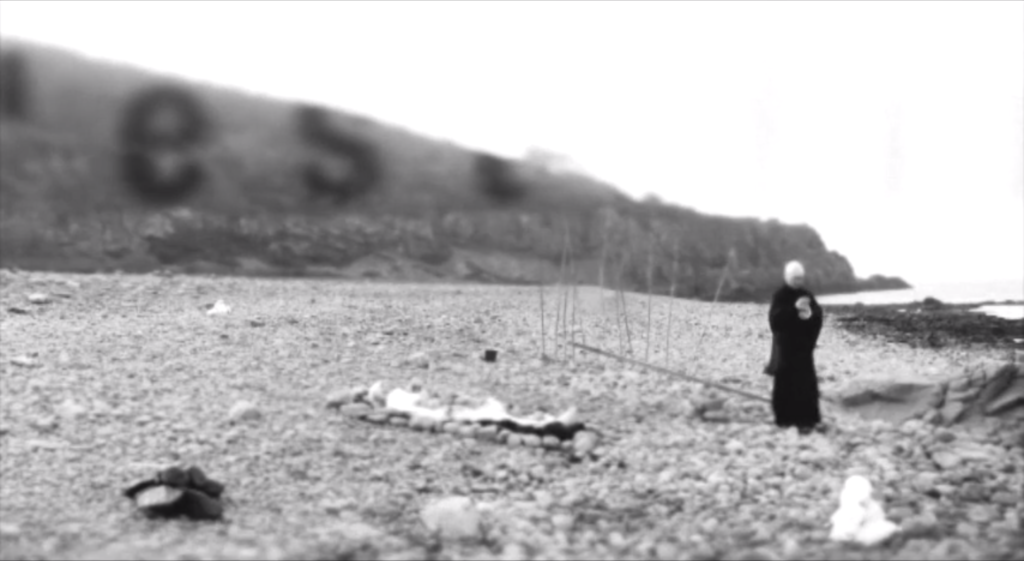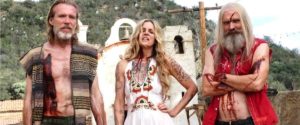
They were all around us that day. In the confusion in the air. In our strange dreams. In the baggage we’d brought with us and would have to leave. In our fading animal memories:
The humming gold of being, and ceasing to be. The exposed motor of eternity.
-“Wasps” by Laura Kasischke
If we understand the dramatic form of tragedy to be a story that focuses on suffering and ends unhappily, it would not be a stretch to say that all human life is tragedy, and made so by its immutable, inescapable commonalities: every life, from the longest to the shortest, involves some amount of suffering (even later term fetuses cry in utero), and it always, always ends in death. To document life in art is to document, spoken or unspoken, a particular tragedy of imperfection, an evolutionary misstep that in many ways proves it has no guiding hand; every movie is a tragedy, the start and end of innumerable lives, fictional or not, just as every moment of our lives is the same. To live and grow is to learn to navigate an indifferent cosmic cruelty. Time moves us through this universe, and our consciousness allows us to see the moving walkway underneath, paralyzing as we realize our powerlessness (and giving us, perversely, freedom, purpose, and spirituality too).
To get my head (slightly) out of my ass: there’s a thirty day long film (or, more pertinently, 720 hours) by Anders Weberg called Ambiancé being worked on right now, scheduled to play the month of Jaunary, 2020. Preceded first by a seventy two minute teaser in 2014, then a seven hour and twenty minute short trailer in 2016, and finally by a seventy two hour final trailer in 2018 (we’re currently in the second stage, with the “short” trailer being recently released), it’s set to be Weberg’s final film. After playing precisely once, the film will be destroyed. If there is a modern film as myopically obsessed with time’s march and life’s tragic majesty, I hesitate to name it, and I watched all seven hours and twenty minutes of the second trailer for the good of humanity. Or, at the very least, I watched it for the good of Dim the House Lights readers (you all can thank Juan for that).
Here’s what happens, more or less: two people, one dressed in black and the other in white, approach the camera, collecting rocks from the shore of a beach (not at all coincidentally, the same beach where Max von Sydow played chess against Death in Bergman’s legendary The Seventh Seal) and slowly building… something. There’s long shafts of wood, there’s flowing white fabric, and there’s at least one rope involved. Ritualistically, they build and dismantle obscure structures, the one in white “dies”, it seems, and then wakes again, the one in black is caught by the fabric and then released, and finally they approach the camera, kiss, and leave. This is all done very, very, very slowly.
As a film, it’s clearly incomplete (never has a seven hour film felt so much like part of a greater artistic whole), often frustrating, sometimes beautiful, and on occasion frightfully dull. But like any truly great trailer, it showcases the vibe, tone, and central point of the film it precedes: boredom is, to be a bit pretentious, part of the point. So is frustration. So is the fact that my mind drifted while I was watching it more than a bit; this isn’t Sátántangó, where all seven hours you’re glued to the screen. Your mind takes little trips, your attention wavers, and you miss things. Anders Weberg made a film about his life that is, in the truest sense, about his life; you and I will never know all of it. It’s thirty days long so that it’s impossible to watch it all; it will be destroyed afterwards so no one can go back through and piece the entire thing together. The only person on earth who will see every frame is the man who lived it. An hour, a day, a month–are these so much to ask to measure a life?
It’s important to remember, when we think about Ambiancé and the scope it wishes to have, about two other films–Alan Resnais’ Night and Fog, and Claude Lanzmann’s Shoah. I don’t mean to compare the scope of the tragedy both films document–that of the Holocaust–to the scope of one human life; doing so would be a disservice and an insult. Rather, I want to think about what length in film means, and why all documentation (fiction or non-fiction) is, to some degree, a noble but unwinnable battle. Night and Fog barely inches over the half hour mark; Shoah clocks in at over nine hours, and the footage Lanzmann shot but didn’t include in the film ended up being made into multiple other full length documentaries. One isn’t even feature length, and the other is at least three times as long as the longest movie the average theater-goer will watch. Yet they’re both considered (rightfully, in my opinion) to be two of the greatest documentary films ever made, and some of the most vivid, important, and haunting examples of the responsibility art has in making us remember, in trying to make that which could be lost, last.
How could they both work so well? Why doesn’t Night and Fog feel dwarfed in the presence of Shoah? How does Shoah not feel hopelessly bloated in the shadow of Night and Fog? The truth of the matter is that tragedy, human tragedy, is so large that there is nothing that can truly contain it. Night and Fog narrows its view down to just a speck of its ghostly trail, while Shoah keeps pulling back, not wanting to miss a single wisp, not wanting a single story to fade away in the consuming blackness of history’s forgetful memory. What they both realize is that what they are attempting is both foolhardy and necessary. We can film for fifteen minutes, we can film for fifteen years- at the end, have we captured what we wished? How could one film, no matter how good, no matter how exhaustive, no matter how singular, hope to capture the lives and deaths of millions upon millions of people? For that matter, how could it hope to capture the life and death of even one? But still, we have to try. A refusal to try because of inevitable failure is a wrongdoing to those that have come before you.
Tragedy is too great to be “summed up,” but we must sum it up. Tragedy is too great to be expressed, but we feel a need to express it. Tragedy (read: life) is massive beyond belief, but we have to drag it behind us. So Ambiancé understands. So again: is thirty days really so long after all, to express what a life might mean? It’s paltry. It’s small. How long have you been alive? Is your life only thirty days of feelings, of moments, of pieces of your being that no one else will ever know? The minutes, hours, days, weeks of Ambiancé you don’t see (assuming you see it at all) will outpace you. They’re those times you slept alone while your partner was away seeing their parents. It’s you humming a small song in the shower that no one else hears. It’s that book you read but never talked to anyone about. It’s the moments of darkness you never could explain quite right. It’s your place in history, consumed by its incredible size, hoping against hope that maybe just a piece of you will sneak through for the future.
Spend a lifetime documenting five minutes in the day of a flea, every particle, every atom, every quark, work out whether there’s strings underneath all that, and still come up short; spend another lifetime trying to explain the history of the planet Earth, how each thing lead to each other thing, how every moment lead to the next, and come up with answers just as incomplete. It’s not the success of your endeavor, it’s the endeavor itself that means what it means, in the darkness of the universe, in the expanse of time. Build your own path to Tralfamadore, however you have to get there; if art is anything, it is these capsules of being, and even as we consume them we know their futility and contradictory success, and we learn to live in the light of approximation. Approximation’s warmth is to consciousness as the sun’s light is to a tree, and it’s good to bask in it without ignorance of its reality.
So of course Ambiancé needs to be that long, and of course its trailer needs to be its own absurd journey. Of course it needs to be boring, and tedious, and occasionally breathtaking and rapturous, and of course it needs to be annoying and despondent and ecstatic and more than a bit silly. Because, as much as I talk about hopelessness and tragedy and failure, it’s worthwhile. To help someone tell their story, or to tell your own, it’s necessary, it’s important, and it’s just about the only thing worth doing. Should you watch a seven hour trailer for a month long movie? Fuck dude, I don’t know. Maybe you’re wired in a way that lets you align yourself with Camus’ conception of the absurd without sitting on your couch for seven hours. But maybe you’re like me, and art serves as a way to center you, to reveal the already known, as a ward against ever-encroaching nihilism. In that case, I’d say there’s far worse things to do with your time, and, assuming life permits (cross my fingers for a real writing job by 2020), I’ll be first in line for the whole thing.
—
The trailer for Ambiancé is currently available on the film’s website, thelongestfilm.com
Ambiancé, the short trailer; directed by Anders Weberg; starring Niclas Hallberg and Stina Pehrsdotter; 440 minutes.



 Derek
Derek
 Isabelle
Isabelle